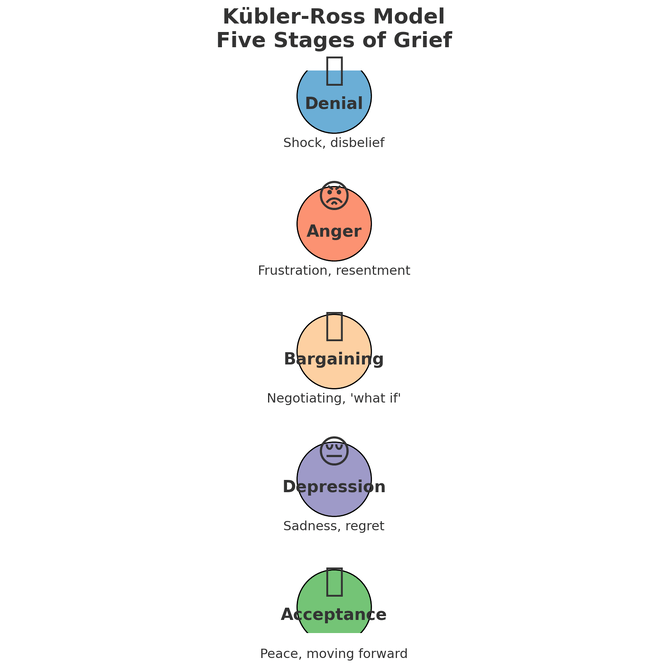The Kübler-Ross model is often called the "Five Stages of Grief" model. It was introduced by psychiatrist Elisabeth Kübler-Ross in her 1969 book On Death and Dying. She developed it after working with terminally ill patients and observing their emotional responses to facing death.
The model describes five stages people often go through when dealing with grief, loss, or major life changes:
Denial
A state of shock or disbelief.
"This can’t be happening."
Denial acts as a buffer to protect us from overwhelming emotions.
Anger
Frustration, resentment, or helplessness may surface.
"Why me? This isn’t fair."
Anger may be directed at others, oneself, or even at the situation.
Bargaining
Trying to make deals or find ways to reverse or postpone the loss.
"If only I do this, maybe things will change."
Often accompanied by guilt or "what if" thinking.
Depression
Deep sadness, regret, or despair as reality sinks in.
"What’s the point of going on?"
This isn’t necessarily clinical depression, but a natural part of grieving.
Acceptance
Coming to terms with the reality of the situation.
"It’s going to be okay."
Doesn’t mean happiness, but rather finding peace and a way forward.
🔑 Important points to remember:
The stages are not always linear—people may move back and forth, skip stages, or experience them in a different order.
It applies not only to death and dying but also to other forms of loss or major change (e.g., job loss, divorce, illness, business failure).
The model is more of a framework to understand emotions, not a strict prescription of how everyone grieves.

